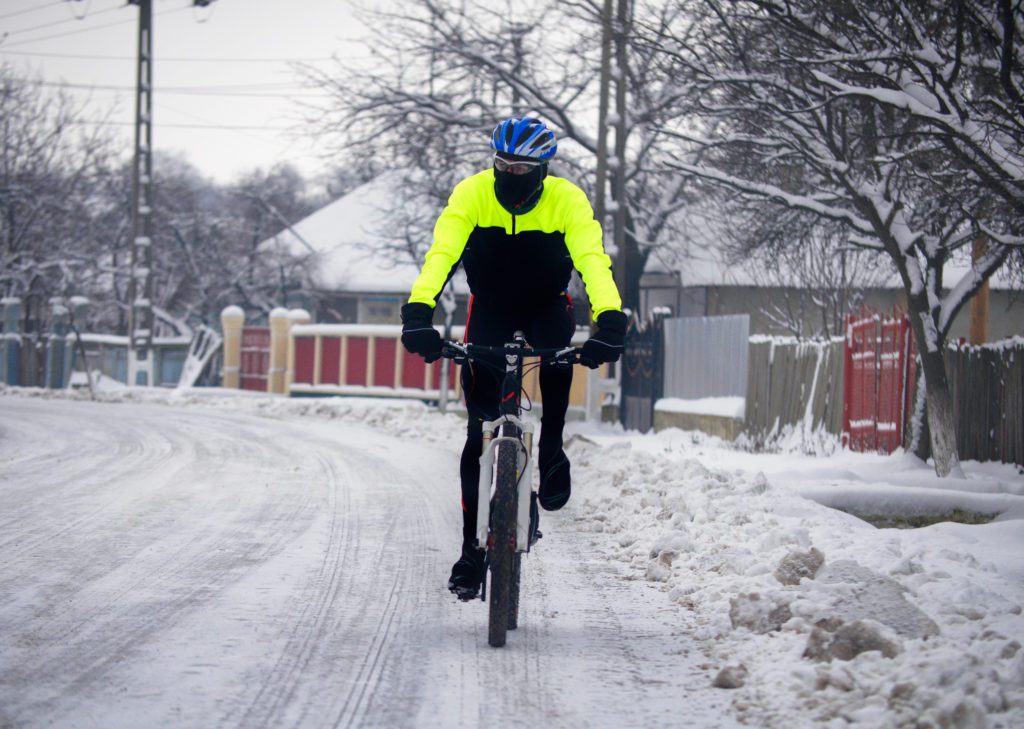Train in the cold
Get off the trainer and enjoy winter on two wheels

by Stephen Cheung

While we have enjoyed months of lovely riding, payback has arrived in the form of winter. We can curse the cold and hibernate indoors on the trainer, or we can stay active outside and enjoy what winter has to offer.
Is cycling outdoors safe for your health? Does gulping in big lungfuls of cold air damage your respiratory system? One look at Nordic skiing and biathlon should put most of those fears to rest. Also, studies show that exercising and breathing -35 C air has no difference in oxygen uptake, breathing rate or core temperature compared with breathing normal room air.
RELATED: What’s your excuse? We talk to the man who rode 342-km on Zwift
Cold and dry air, however, can be a major trigger for asthmatics. If you suffer from asthma, one way to minimize the risk is to perform a long and gradual warm-up, along with breathing through a bandana or mask to help slow down and humidify the air.
Another common question is whether cold affects your muscle function. Cold muscles or a decrease in body temperature will indeed decrease muscular endurance, resulting in decreased power output. In a recent study in my lab, my 15-km time trial power dropped from about 240 W in normal 22 C temperatures down to about 210 W in 0 C, and after I had already cooled down by about 0.5 C.
RELATED: Watch: What’s the most efficient mini pump?
To counteract the effects of cold, make the investment in quality thermal clothing. If your hands and feet are prone to cold, make sure they are properly protected with mittens for the hands and possibly plastic bags around your feet to trap heat.
So, if it is physically safe to exercise outdoors in the cold, what kind of outdoor riding might be most beneficial for keeping fitness through the winter? Overall, the best option may be to emphasize longer low-intensity endurance rides. If you are the type who dislikes indoor training anyway, you won’t really build aerobic endurance indoors during an hour-long, or less, session. Rather, the best bang for your hour will be to emphasize short and hard interval sessions indoors, and leave the endurance training for outdoors.
RELATED: The benefits of pedalling throughout the winter
Doing intervals of hard work, even outdoors, will generate heat and sweat. During the recovery periods, that sweat tends to get trapped within your clothing, causing much greater heat loss compared with exercising at a lower but steady rate. Exercising at a rate that generates mild but not heavy sweating is a trick well-known to polar explorers.
If you are a roadie, the winter is also a perfect time to break out the mountain or fat bike. The wider tires will give better grip and traction on potentially icy or snow-filled roads. Hitting the trails and riding into the woods is a terrific way to keep yourself out of cold winds on exposed roads. An added bonus is that riding on slick snow can greatly increase your bike handling skills and confidence cornering and in slippery conditions once you are back on the open roads.
Ultimately, winter is no reason to hang up your wheels. A long and fun endurance ride is a great break from endless indoor riding, and can make you more confident and skilled on your bike come spring.
